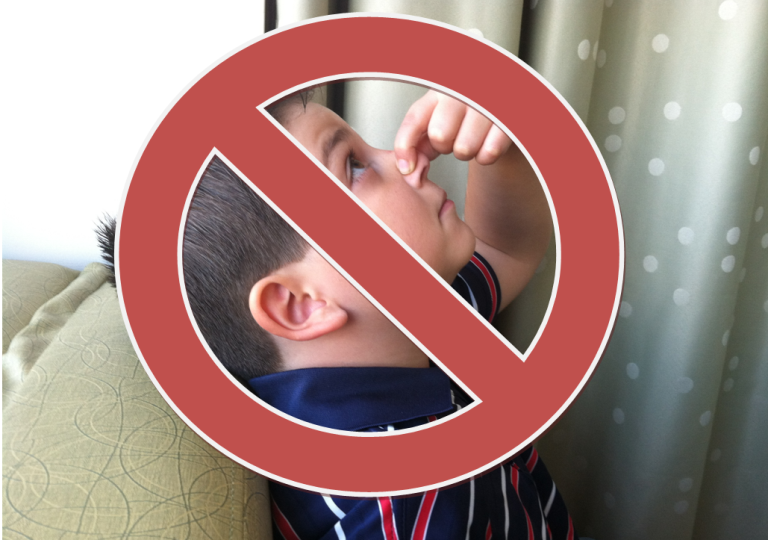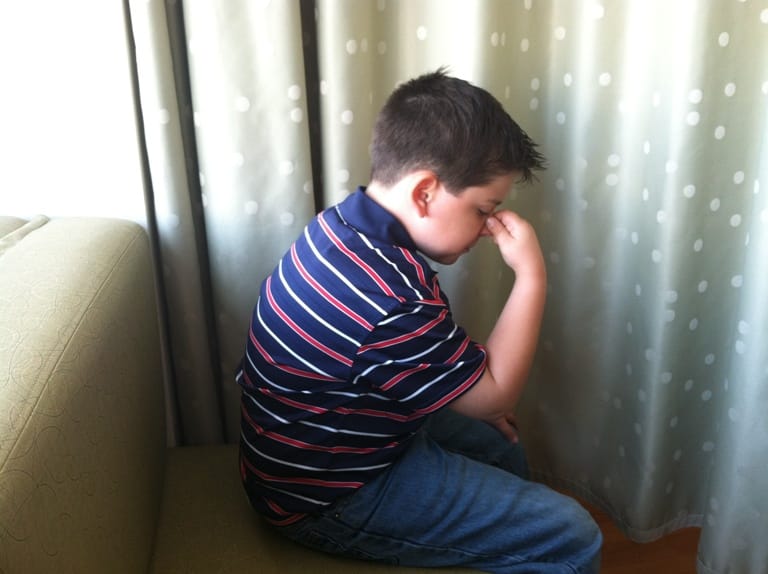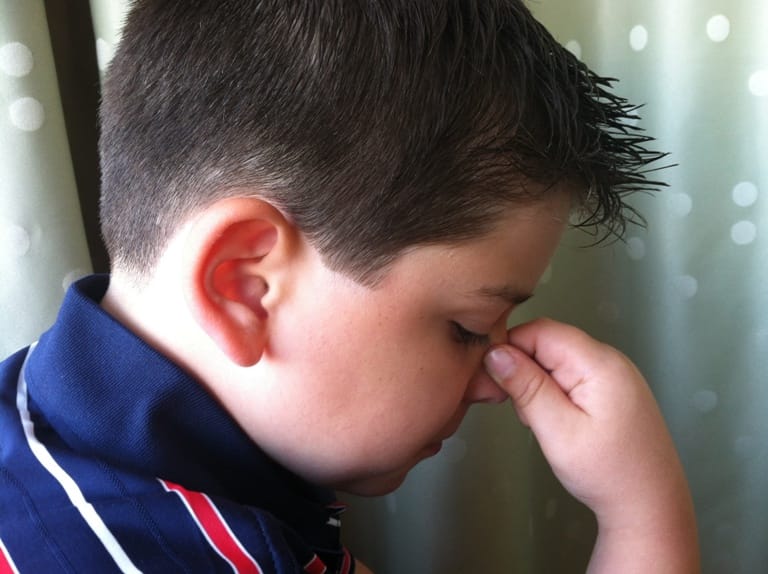It can be equally scary for both parent and child to figure out how to make a nosebleed stop. As with most things, remaining calm as a parent is one of the most important things you can do as a first step to helping your child remain calm as well. And, below, I’d like to share some tips for you regarding prevention and stopping bloody noses at your house.
Why Do Nosebleeds Happen?
Most bloody noses are due to one of the following causes:
- Dry membranes in the nose (dry air, or heated indoor air)
- Frequent nose picking
- Trauma (such as a soccer ball hit to the nose)
SPECIAL NOTE: If the bloody nose follows an accident or injury to the head then seek medical attention immediately.
Preventing Nosebleeds
- Use a soft tissue when blowing the nose.
- Don’t forcefully blow or pick the nose.
- If you have dry nose membranes, your doctor may recommend the use of a special lubricant or humidifier to moisten the inside of your child’s nose.
Don’t Stop a Nosebleed This Way
- Don’t panic. It is much easier for your child to listen to your instructions if you appear calm.
- NEVER tilt your child’s head back. This will only make the blood flow down the throat to the stomach, or into the lungs. Your child may vomit blood later due to irritation of blood in the stomach.
- Don’t pick the nose after a nosebleed.
- After the bleeding is controlled, do NOT let your child blow the nose or the clot may be released and the bleeding may reoccur.
 Do not ask your child to lean back to control a nosebleed. Check below for the correct position.
Do not ask your child to lean back to control a nosebleed. Check below for the correct position.
Stopping a Bloody Nose
Here are the tips to follow:
- Sit up and lean slightly forward.
- Pinch the nose just below the bony part using your thumb and index finger.
- Hold the pinch for NO less than 5-10 minutes straight without looking.
- After 5-10 minutes release the pressure. If the bleeding has not stopped then repeat pinching your child’s nose for another 10 minutes.
- You may also put an ice pack on your child’s nose after the bleeding has stopped to constrict the blood vessels in the nose.
- After the nosebleed has stopped, keep your child’s head above the level of the heart (in other words, don’t take a nap immediately after the nosebleed or lay on the grass – keep them upright, either seated or playing).


This photo shows a close-up of the area on the nose to "pinch" to control a nosebleed.
SPECIAL NOTE: If your child’s nosebleed does not stop after a second or third try, please seek medical attention immediately.
I hope these tips help. Remember to talk to your doctor if your child is experiencing frequent nosebleeds or if they are difficult to control. In the meantime, let me know if you have any questions by leaving a comment for me below.